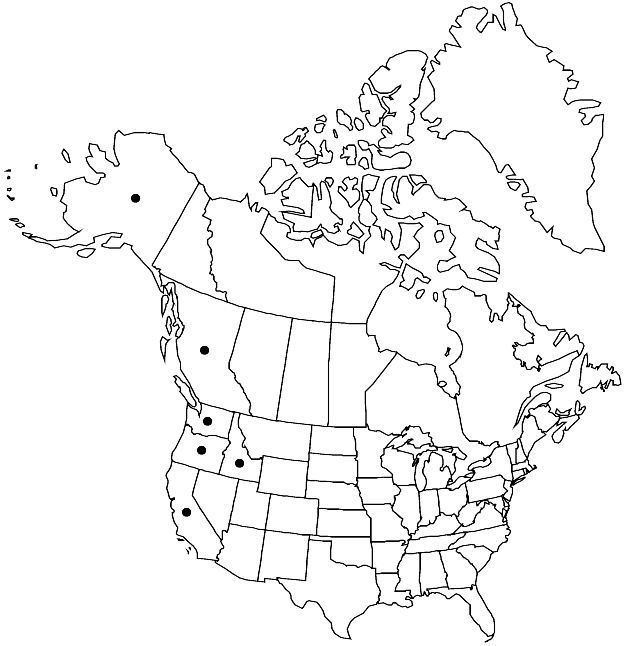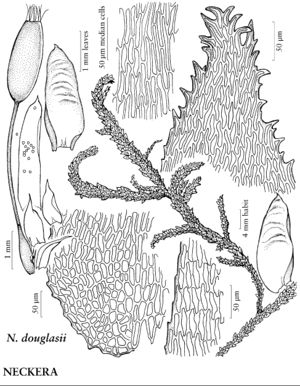Difference between revisions of "Neckera douglasii"
Bot. Misc. 1: 131, plate 35. 1829.
FNA>Volume Importer |
imported>Volume Importer |
||
| (One intermediate revision by the same user not shown) | |||
| Line 51: | Line 51: | ||
|publication year=1829 | |publication year=1829 | ||
|special status=Endemic;Illustrated | |special status=Endemic;Illustrated | ||
| − | |source xml=https:// | + | |source xml=https://bitbucket.org/aafc-mbb/fna-data-curation/src/2e0870ddd59836b60bcf96646a41e87ea5a5943a/coarse_grained_fna_xml/V28/V28_948.xml |
|genus=Neckera | |genus=Neckera | ||
|species=Neckera douglasii | |species=Neckera douglasii | ||
Latest revision as of 21:39, 5 November 2020
Plants (7–)10–14(–20) cm. Stems with branches common, attenuate; paraphyllia absent. Stem leaves (central) oblong to oblong-lanceolate, strongly undulate, 3.5–5 × 1–1.5(–2) mm; margins entire to slightly serrulate proximally, serrate to dentate at apex; apex abruptly acute to acuminate; costa double, single, short, or ecostate; alar cells irregularly rectangular; basal laminal cells fusiform to rectangular, (7–)10–12(–15) × 1–2 µm; distal medial cells linear-flexuose, (30–)42–60 × 2 µm; apical cells rectangular, (13–)18–30 × 2–3 µm. Sexual condition dioicous. Seta (0.2–)0.4–0.6 cm. Capsule exserted.
Habitat: Decaying logs, trunks, hanging from branches, soil, rock of mixed conifer-hardwood forests, redwood forests, humid coastal forests
Elevation: low to moderate elevations (0-500 m)
Distribution

B.C., Alaska, Calif., Idaho, Oreg., Wash.
Discussion
Neckera douglasii is the only species of the genus with large recurved teeth at the leaf apex; the species is limited to western North America. The stem leaf base is slightly auriculate; the basal laminal cell walls are porose; and the distal medial and apical cell walls are slightly pitted.
Selected References
None.
